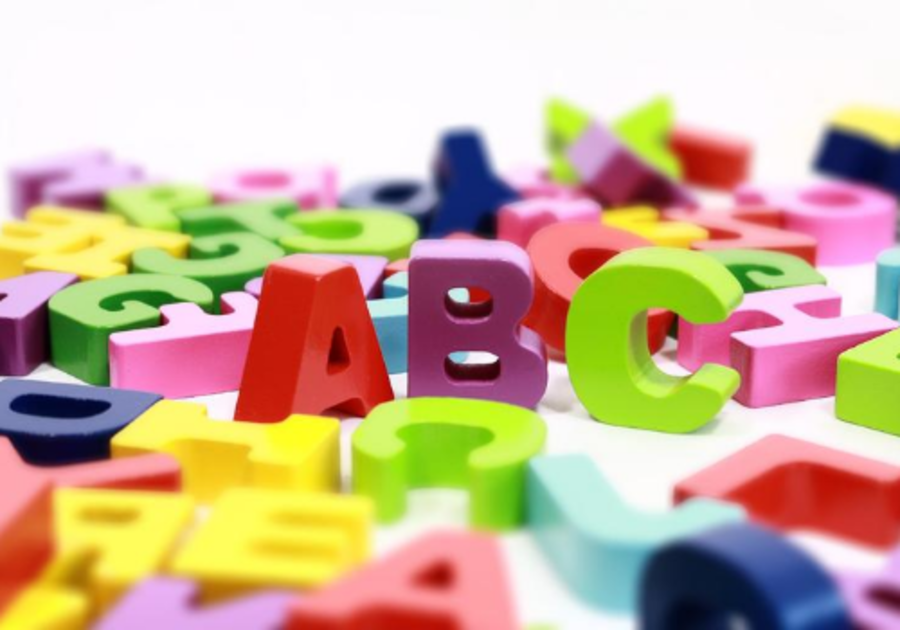Looking for ways to help your kids learn their letters?
Most kids learn letters between the ages of 3 and 5, according to the U.S. Department of Education. Here are some fun — and very easy! — games and activities to help you teach your preschooler the ABCs.
The best part? These letter recognition games only require supplies you probably already have at home.
1. Letter Scavenger Hunt
Indoor Option - Write upper and lower case letters on Post-It notes, index cards, or construction paper. Hide the cards (remember to stay at or below preschool height!) throughout your house. Depending on the child's ability level they can bring them to you in order, or you can help them put them in order after they've retrieved them all.
Outdoor Option - If the weather is nice, head out to Lincoln Yards and hunt for letters A to Z - each 26-foot tall letter has been painted on garage doors and building walls by local artist Merlot. Stop by each one, snap a photo and turn them into your own alphabet book! (keep reading below) or just take a walk around your own neighborhood and search for letters on storefronts, advertisements, t-shirts, and street signs. Or change it up and search for items that begin with a specific letter. Talk a walk around the block (or your yard) with index cards marked with each letter of the alphabet. Let your child choose a card at random and then look to find three items (or however many works for you!) that begin with that letter. For example, if the “S” card is pulled, you could name things like a squirrel, the sidewalk, or the sun.
2. Freeze dance
Play a family favorite song and get everyone dancing! When the music stops everyone must freeze and shout a word that starts with A. The next time you stop, freeze and shout out words that start with B, and so on. If shouting out is too overwhelming, let kids go around the group and yell a word one at a time
3. Letter Book
Make a 26-page blank book out of plain paper. Your child (or you!) can write a letter on each page. You can either let your kids find pictures in magazines that start with that letter and cut them out to paste in the book, draw pictures, or both! This is a fun ongoing project to create with your kids. We created a simple coloring sheet to use as a title page for each "chapter" - subscribers can download it HERE for personal use.
4. Mystery Letter Bag
Add magnetic letters or letter flashcards to a paper bag, along with small items like cotton balls, rice, or beads. Kids, eyes closed, choose an item from the bag. When they choose a letter, they name it. When they choose an object they can name a few other words that start with the same letter. Want to make it more challenging for older learners? Have them write a sentence using two words that start with the letter they chose or that incorporate the object they pulled from the bag. I love this activity because you can combine sensory time with letters.
5. Letter Basketball
This is a great outdoor game with two or more letter learners. All you need is a ball and a basketball hoop. Don't have access to those? You can use a crumpled up piece of paper and a bowl or trashcan instead! You'll hold up a card with a letter on it and if the child gets it right they get to take a shot. Kids earn one point for getting the letter right and one point for making the shot. Count up the points and the child with the most points at the end wins the game.
6. Hammer Time
This ABC game is great for motor skills development too! You will need styrofoam, golf tees, a small/toy hammer and a marker. Take a piece of styrofoam (thicker the better) and write the alphabet in random order on one side of the styrofoam piece. Call out a letter and once your child finds it they can hammer a golf tee into it. You can adjust the game to focus on capitals, lowercase, site words or even spelling their own name! If you think your child is ready for real wood and nails, then please consider these safety tips:
- wear safety glasses/goggles
- demonstrate how to hold a nail low
- use a softer wood like pine
- use a nail with a larger head like those for aluminum siding or roofing
The original article was written by Alicia Marshall, publisher of Macaroni Kid Scranton, Pa. Edited for Macaroni Kid Chicago subscribers.



